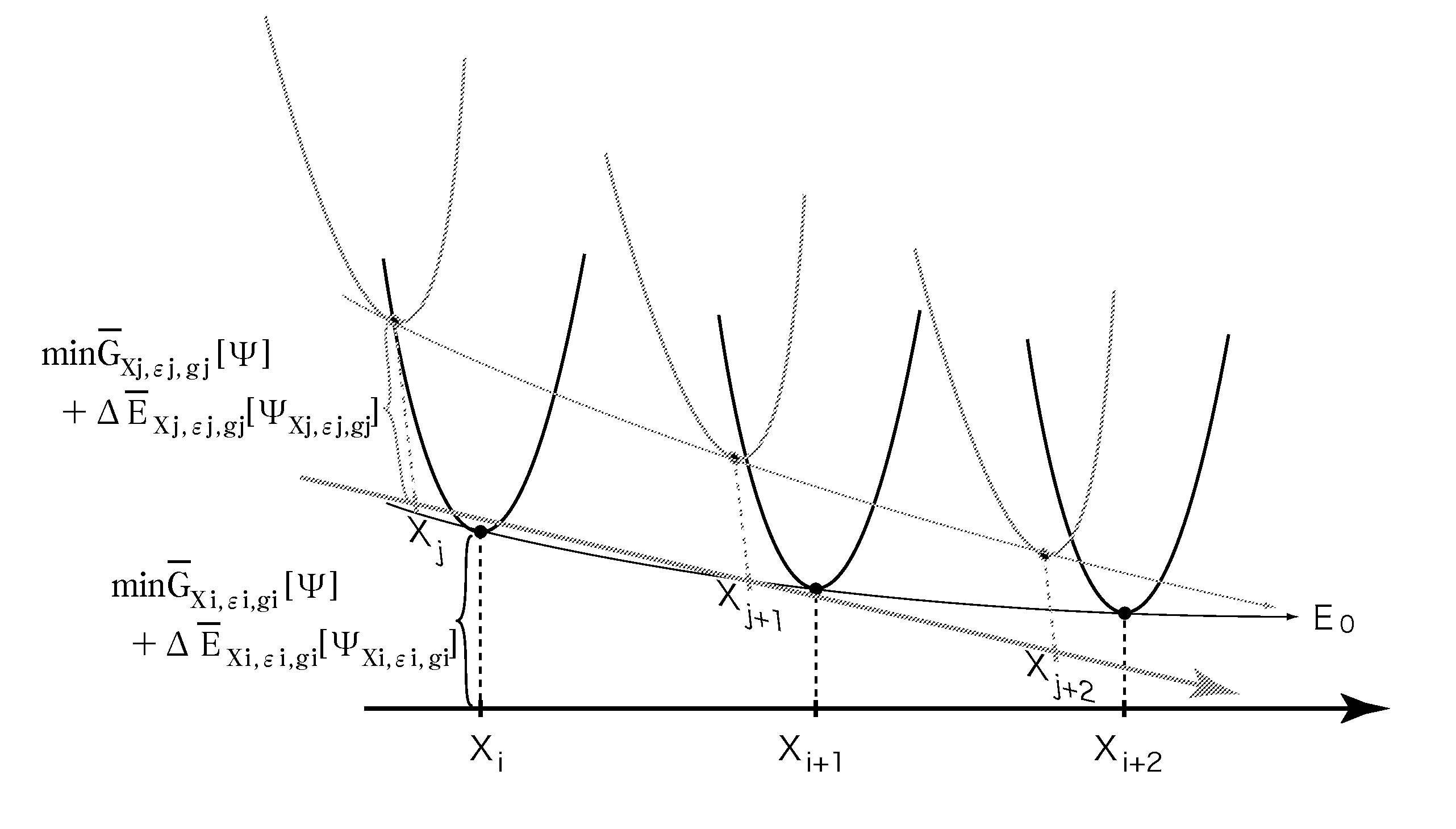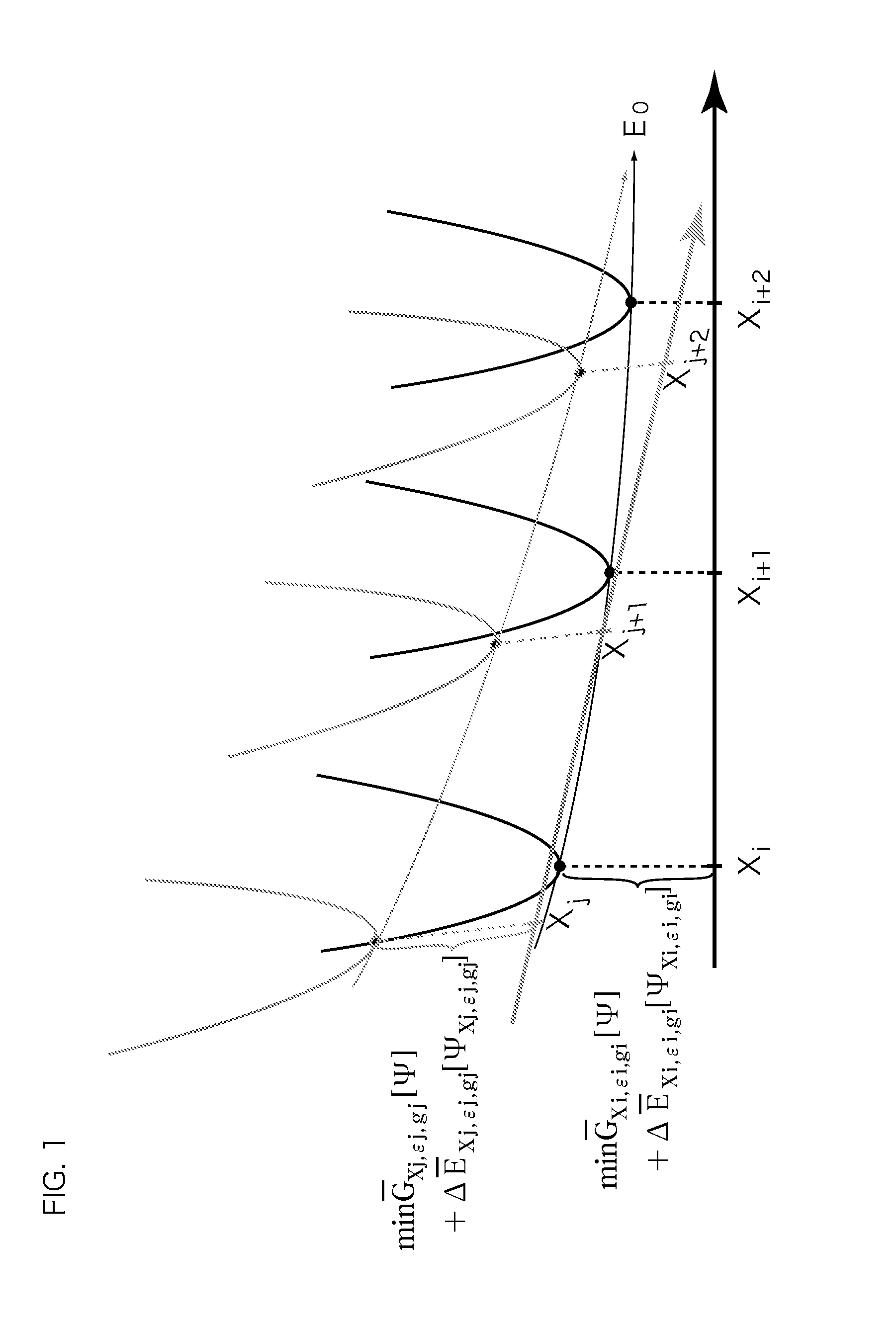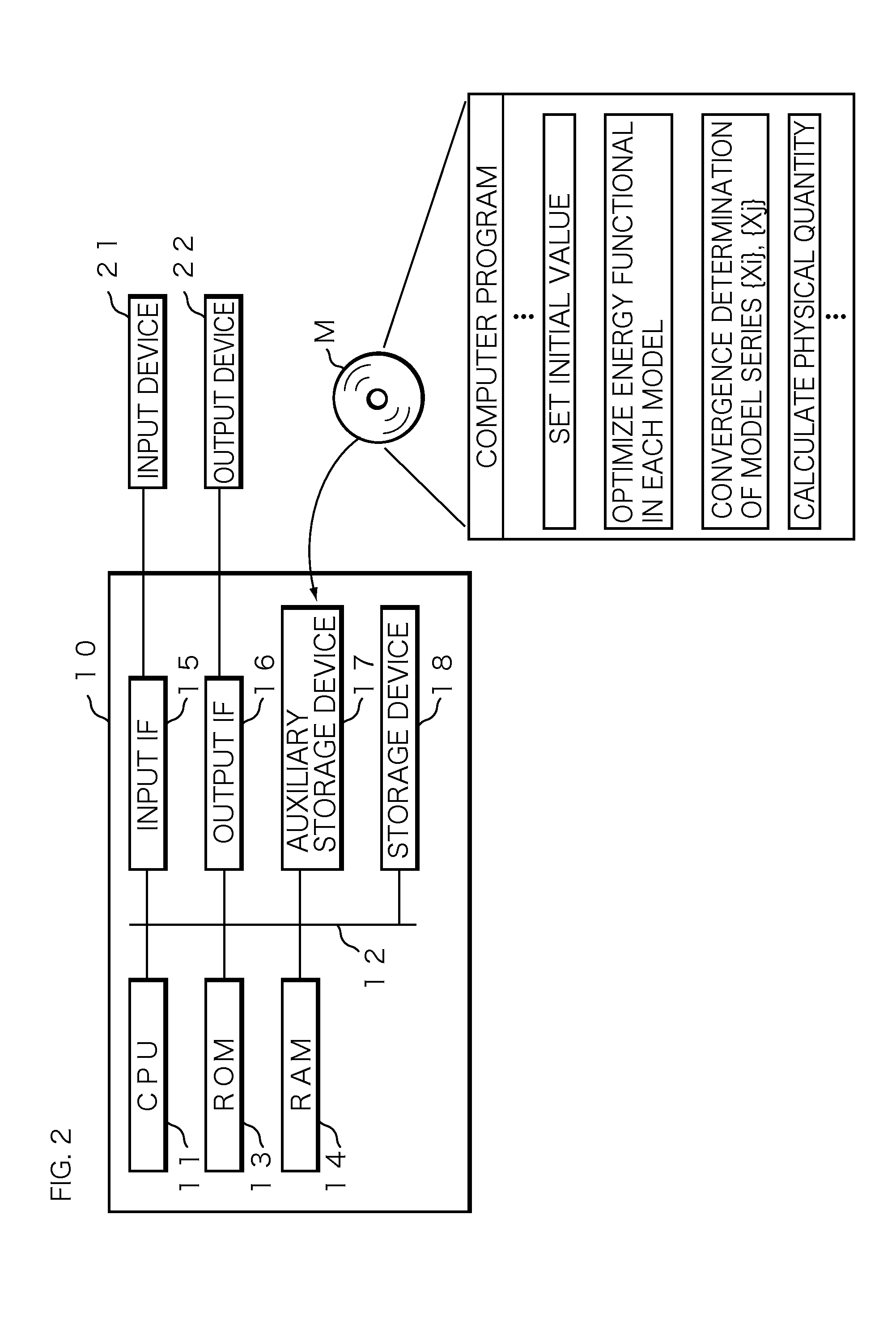Electronic state calculation method, electronic state calculation device, and recording medium
- Summary
- Abstract
- Description
- Claims
- Application Information
AI Technical Summary
Benefits of technology
Problems solved by technology
Method used
Image
Examples
first embodiment
[0045]The calculation principle of an electronic state calculation method according to the present embodiment is as follows: In the present embodiment, as a method of determining an optimized operation model that realizes the properties shown by the exact solution of the electronic state, it is aimed to reproduce the properties through numerically obtaining an order parameter which is the electron density generated by a Coulomb many-body system in the ground state. The electron density is a physical quantity that can be observed by an experiment, and its existence is known. An energy E0 of the ground state of the Coulomb many-body system can be numerically evaluated since it satisfies the following expression:
E0≤mini{minΨG_Xi,ɛi,gi[Ψ]+ΔE_Xi,ɛi,gi⌊ΨXi,ɛi,gi⌋}.(Formula1)
[0046]The energy functional GbarXi, ∈i, gi is defined by the following formula:
G_Xi,ɛi,gi[Ψ]=〈ΨT^+V^redXiΨ〉+e22∫rr′nΨ(r)nΨ(r)r-r′+Eɛilocal[Ψ]+Eginon-local[Ψ]+∫rvext(r)nΨ(r).(Formula2)
[0047]Moreover, ΔEbarXi, ∈i, gi is ...
second embodiment
[0101]An up-conversion process may be introduced to the electronic state calculation method described in the first embodiment.
[0102]In the second embodiment, a form will be described in which the up-conversion process is introduced to the electronic state calculation method of the first embodiment.
[0103]The following formula 13 is a definitional equation of a model used for the second embodiment of the up-conversion method, by a model in which the projection operator is introduced to one-electron bands or one-electron orbitals for which the fluctuation effect is important, and a screened interaction type interaction strength is introduced as a parameter to adjust the strength of the effective interaction provided by the fluctuation term.
G_λ,A[Ψ]=〈ΨT^+V^(λ)Ψ〉+e22∫rr′nΨ(r)nΨ(r)r-r′+(1-λ)Erxc[nΨ]+∫rnΨ(r)vext(r),V~(λ)=λ{12∫3r3r′2r-r′:n^(r)n^(r′):-12∫3r3r′2r-r′nΨ(r)nΨ(r′)-12∫3r3r′2-κ(1-λ)r-r′r-r′ [P^A:n^(r)n^(r′):P^A-〈ΨP^An^(r)P^AΨ〉〈ΨP^An^(r′)P^AΨ〉}+12∫3r3r′2-κ(1-λ)r-r′r-r′[P^A:n^(r)n^(r...
third embodiment
[0114]By using the electronic state calculation method described in the first and second embodiments, an optimized operation model where the number of times of calculation is the smallest while the physical properties shown by the exact solution are reproduced can be determined.
[0115]In the third embodiment, a method of selection of the optimized operation model will be described.
[0116]Formula 14 shown below shows a model functional that provides a continuous model series that connects with the Coulomb system by the single continuous parameter with convexity. Vhat / tilde(λ) is provided as a correlation term that generates a positive definite operator from the λ differential. The value of λ takes a value from 0 to 1, and at λ=1, the original Coulomb interaction system is reproduced.
G_λ,A[Ψ]=〈ΨT^+V~(λ)Ψ〉+e22∫rr′nΨ(r)nΨ(r)r-r′+(1-λ)Erxc[nΨ]+∫rnΨ(r)vext(r),V~(λ)=λ{12∫3r3r′2r-r′:n^(r)n^(r′):-12∫3r3r′2r-r′nΨ(r)nΨ(r′)-12∫3r3r′2-κ(1-λ)r-r′r-r′ [:n^~(r)n^~(r′):-〈Ψn^~(r)Ψ〉〈Ψn^~(r′)Ψ〉}+12∫3r3r′...
PUM
 Login to View More
Login to View More Abstract
Description
Claims
Application Information
 Login to View More
Login to View More - R&D
- Intellectual Property
- Life Sciences
- Materials
- Tech Scout
- Unparalleled Data Quality
- Higher Quality Content
- 60% Fewer Hallucinations
Browse by: Latest US Patents, China's latest patents, Technical Efficacy Thesaurus, Application Domain, Technology Topic, Popular Technical Reports.
© 2025 PatSnap. All rights reserved.Legal|Privacy policy|Modern Slavery Act Transparency Statement|Sitemap|About US| Contact US: help@patsnap.com



